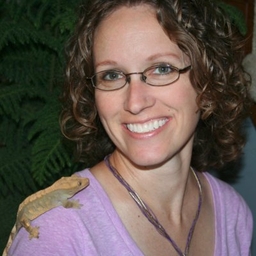
Articles
-
2 weeks ago |
whoi.edu | Alison Pearce Stevens
Harmful algal blooms (HABs) can pose a threat to people, pets, and livestock, as well as aquatic and marine life. WHOI researchers in the Anderson and Brosnahan Labs are investigating what drives HABs; their efforts to track blooms are leading to innovative new ways to relay real-time warnings to communities to prevent illness and death from HAB toxins. Researchers Don Anderson, Mindy Richlen, and Evie Fachon weigh in on some common misconceptions about HABs and human health.
-
1 month ago |
slj.com | Alison Pearce Stevens |Rachel Joiner
. (Books for a Better Earth). Aug. 2025. 64p. Tr $20.99. ISBN 9780823455645. COPY ISBN Gr 4-8–Stevens has crafted an engaging, accessible book about conservation dogs—working canines trained to locate insects, mussels, and plants that threaten natural environments. These dogs make conservation work more efficient for humans, and play a crucial role in protecting delicate ecosystems.
-
2 months ago |
snexplores.org | Alison Pearce Stevens
Circumnutation describes the slow, circular movements the growing tips of young plants make throughout the day. Although it usually can’t be seen with the naked eye, all plants move. These are movements powered by the plants themselves, not movement due to wind. Plants slowly sway from side to side, a process called nutation (noo-TAY-shun). Circumnutation is a type of nutation in which plants move in a circle or ellipse.
-
Mar 27, 2025 |
snexplores.org | Aaron Tremper |Alison Pearce Stevens
Across the river from Washington, D.C., sits Potomac Overlook Regional Park. Hiking paths wind through acres of forest and cultivated land. Peer into the thick woods and you may glimpse a chipmunk or even a deer. And at the visitor center, there are real-life dinosaurs. One of these is Twiggy. Sitting on her caretaker’s arm, her massive brown eyes blink in the afternoon sunlight. Ribbons of brown and white streak her chest. This mimics sunlight hitting speckled tree bark.
-
Mar 21, 2025 |
snexplores.org | Alison Pearce Stevens
biology: The study of living things. The scientists who study them are known as biologists. cancer: Any of more than 100 different diseases, each characterized by the rapid, uncontrolled growth of abnormal cells. The development and growth of cancers, also known as malignancies, can lead to tumors, pain and death. develop: To emerge or to make come into being.
Try JournoFinder For Free
Search and contact over 1M+ journalist profiles, browse 100M+ articles, and unlock powerful PR tools.
Start Your 7-Day Free Trial →